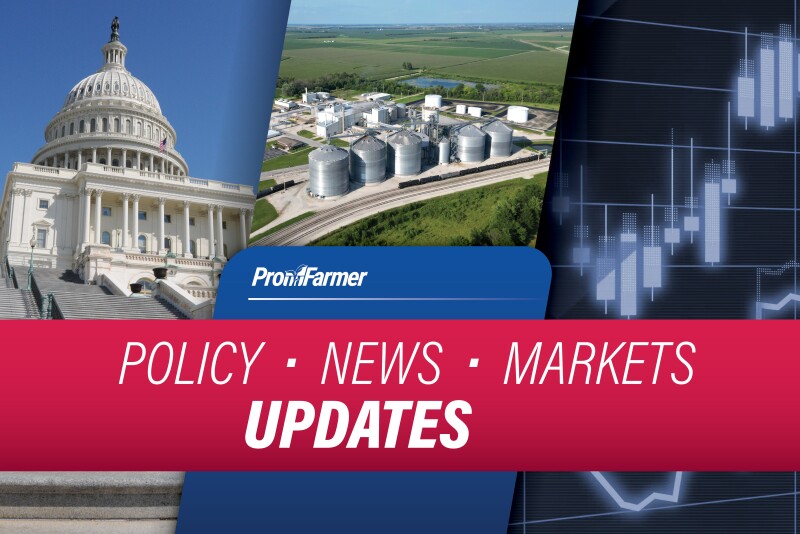- Missed signals, lost deal. How India-US trade talks collapsed: India expected deal until Trump pivoted to Japan and EU. Key issues have been resolved; however, agriculture and dairy in particular remain sticking points, sources say. With the U.S. team due in Delhi, a deal is still believed to be possible.
How Arizona is preparing the public to scout for New World screwworm threat: With its high temperatures and few winter freezes, Arizona is ripe territory for infestation from New World screwworm (NWS).
Ryan Wolker, state veterinarian with the Arizona Department of Agriculture, says he thinks the threat to his state from NWS is significant.
“It is definitely a concern,” he says. “The New World screwworm detections in Mexico have surpassed 3,000 premises and have come within approximately 370 miles south of the southernmost point of Texas, but obviously that can change quite rapidly, especially with the animal movement within the country of Mexico itself.”
Wolker has concerns about the impact NWS could have on Arizona’s already-stressed cattle ranchers.
- USDA targets invasive species, announces next steps to clear the Chesapeake from harmful catfish: Yesterday, U.S. Secretary of Agriculture Brooke L. Rollins announced the U.S. Department of Agriculture is making $6 million in grant funding available for seafood processors to expand operations, transform the food supply chain and create new and better markets for the processing of invasive, wild-caught catfish. Additionally, USDA, in partnership with the Maryland Department of Agriculture, is launching a one-year pilot program to purchase up to $2 million through Section 32 of Chesapeake Bay blue catfish. The effort will support regional processors, remove invasive catfish from the Bay, and provide nutritious protein to families in need through food banks and other food distributors.
Groundwater is drying out, heating up, and causing sea level rise: The Verde River is one of the last free-flowing rivers in Arizona, winding through what’s known as the Verde Valley before feeding into the Salt River. Agriculturally, the valley is relatively fertile, supporting crops like sweet corn, alfalfa, peaches, and pecans, as well as a small wine industry. Recently, though, residents have found that the water below their feet is drying up.
Arizona is far from the only place where groundwater is in big trouble. According to a study released last week in the peer-reviewed academic journal Science Advances, fresh water has been declining at an alarming rate since researchers began observing global groundwater in 2002, creating areas of “mega-drying” that cover much of the Northern Hemisphere.
Unless stringent water management policies are implemented on a global scale, the Science Advances study’s principal investigator, Jay Famiglietti, warns that the consequences could trigger extreme political instability, given that 75 percent of the world’s population resides in countries affected by this extreme drying. “What this study makes clear is that the world is looking at incredible sea level rise,” he said. “I think threats to food security and food production [aren’t] receiving enough attention.”
Food banks have long prevented emissions. Now they’re getting into the carbon credit business: Eight to 10 percent of global greenhouse gas emissions come from food wasted somewhere along its journey from farm to table. When that organic waste ends up in a landfill, it emits methane, a powerful greenhouse gas, as it slowly decomposes.
Food banks can help prevent food waste from occurring, by rescuing unsold food from grocers and retailers and redistributing it to families and individuals in need. Now, a small number of food banks around the world have recently started tracking their operations and quantifying how many emissions they’re avoiding — with the goal of using that data to better aid decarbonization efforts, as well as to sell carbon credits.
But the carbon markets where such credits are traded have been heavily criticized for rampant fraud; the harshest critics say that purchasing credits representing avoided would-be emissions amounts to greenwashing. The rollout of Global FoodBanking Network’s program for calculating food banks’ carbon footprint raises the question of whether nonprofits with social and environmental missions should make use of these controversial accounting instruments to stay afloat and further their impact.
How Will the “Big Beautiful Bill” Impact Ag Policy? The American Society of Agricultural Consultants (ASAC) will host a free webinar on “Big Beautiful Bill” agricultural policy changes on Aug. 19 at 10 a.m. CDT. Titled “What We Know – and What We Don’t Know … at the Moment,” the live, virtual event will feature ASAC member Rusty Rumley, J.D., LL.M., senior staff attorney at the National Agricultural Law Center. The webinar is open to both members and non-members.
Registration is available at: https://www.agconsultants.org/asac_webinars.php.

